New teaching material: Functional imaging data analysis – From calcium imaging to network dynamics
We have just completed our new course, Functional Imaging Data Analysis: From Calcium Imaging to Network Dynamics, for the first time as part of the Master of Neuroscience programꜛ. This course is now available freely online under Teaching, alongside my other open educational materials. All resources were created with a strict focus on open content and reproducibility, so that anyone interested can make full use of the lectures, figures, and example code without copyright concerns.
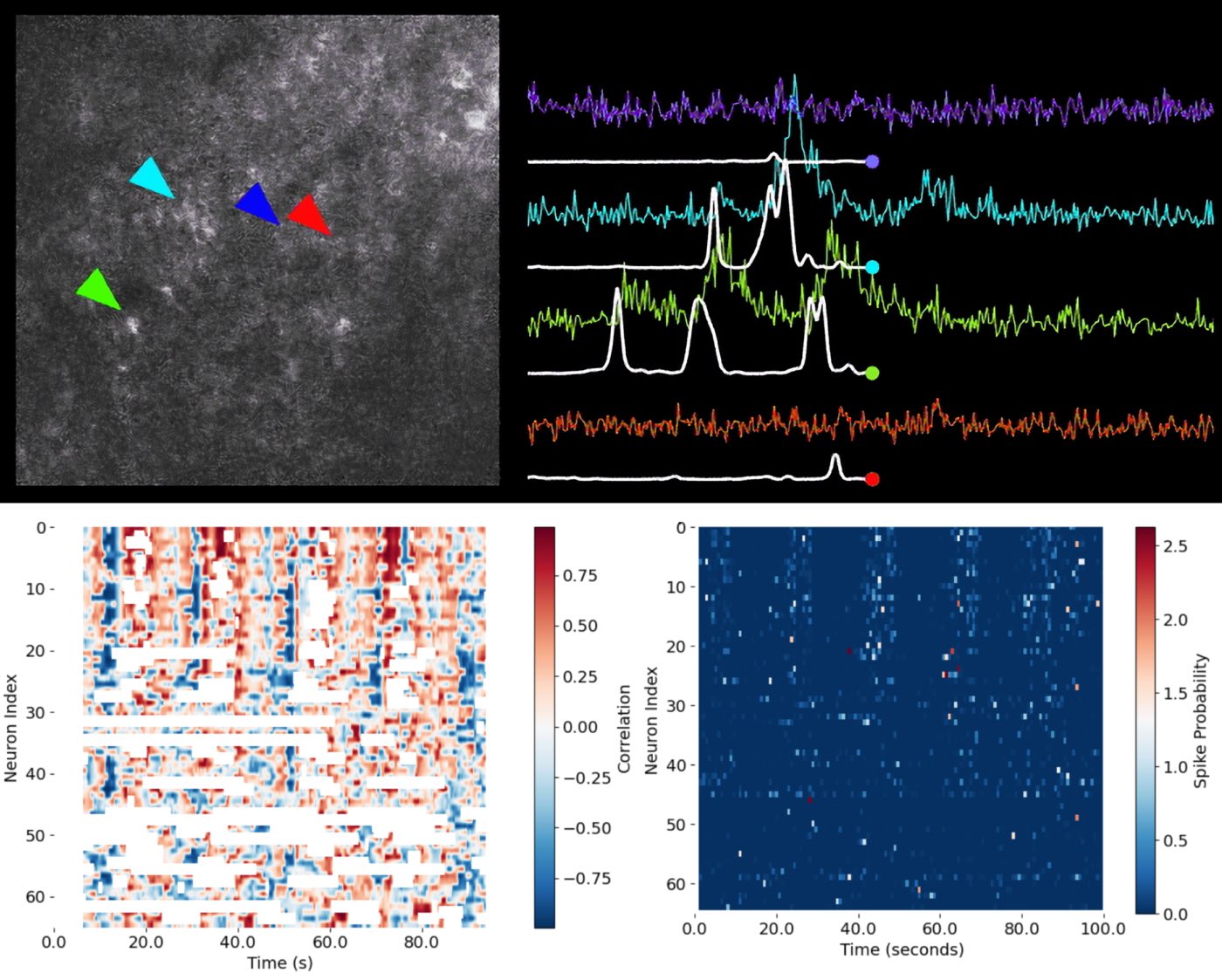
Figure: From calcium imaging to functional population analysis. – Upper left: Example two-photon calcium imaging frame showing the neuropil and several identified neuronal somata (indicated by colored arrowheads: cyan, blue, red, and green). – Upper right: Extracted calcium fluorescence traces ($\Delta F/F$) for the neurons marked in the image, with their corresponding inferred spike probabilities (white lines) overlaid. Each color corresponds to a cell indicated by the matching arrowhead. This panel illustrates how raw imaging data is converted to fluorescence traces, and how computational methods extract spike timing information from noisy signals. – Lower right: Matrix of spike probability estimates for all recorded neurons over time. Each row corresponds to a neuron, and each column to a time point, visualizing the temporal evolution of activity across the neuronal population (network activity). – Lower left: Correlation matrix showing, for each neuron and time point, the correlation between single-neuron activity and the population (network) response. Red denotes positive correlation, blue denotes negative correlation, and white indicates uncorrelated activity or missing data. Together, these panels illustrate the workflow from raw calcium imaging, through spike inference, to the visualization and functional analysis of neural population dynamics. Source of upper panel images: CASCADE GitHub repositoryꜛ (license: MIT License)
What does the material cover?
The lecture material provides a step-by-step introduction to the entire workflow of calcium imaging data analysis, with a focus on modern, large-scale experiments. The course is organized as a modular, self-contained resource that is suitable for students and for self-guided learning. No prior experience in coding — the tutorials and scripts are designed to be approachable and reproducible.
Topics include:
- Biophysical background: How action potentials give rise to calcium transients, and how these are detected by imaging.
- Data extraction: From raw imaging stacks to cell segmentation and extraction of fluorescence traces using tools like CaImAnꜛ.
- Spike inference: Transforming noisy calcium traces into reliable estimates of neuronal spiking using advanced (deep learning-based) methods such as CASCADEꜛ.
- Population analysis: How to reveal structure in large neural ensembles using visualization, dimensionality reduction, correlation analysis, and clustering.
- Interpreting results: Strategies to relate the observed neural activity to network computation and function.
The course contains fully worked examples, practical scripts (in Python/Jupyter notebooks)ꜛ, and detailed explanations of both the methods and the underlying neuroscientific questions.
Why study functional imaging analysis?
Calcium imaging has become a cornerstone of modern neuroscience, enabling us to record from hundreds or thousands of neurons simultaneously in vivo. However, extracting meaningful, interpretable signals from these complex datasets is non-trivial. This material aims to demystify the analysis process, providing a conceptual and practical roadmap from raw image data to functional insights about brain circuits.
Whether you are a student preparing for lab work, a researcher looking to analyze your own datasets, or simply curious about how large-scale neural activity can be measured and interpreted, this course offers a thorough, accessible introduction.
Open access and collaboration
All materials are available for free public use, adaptation, and distribution. Feel free to explore, share, and build upon these resources for your own teaching or research. Feedback and suggestions are always welcome — simply write in the comments below or reach out via Mastodonꜛ.
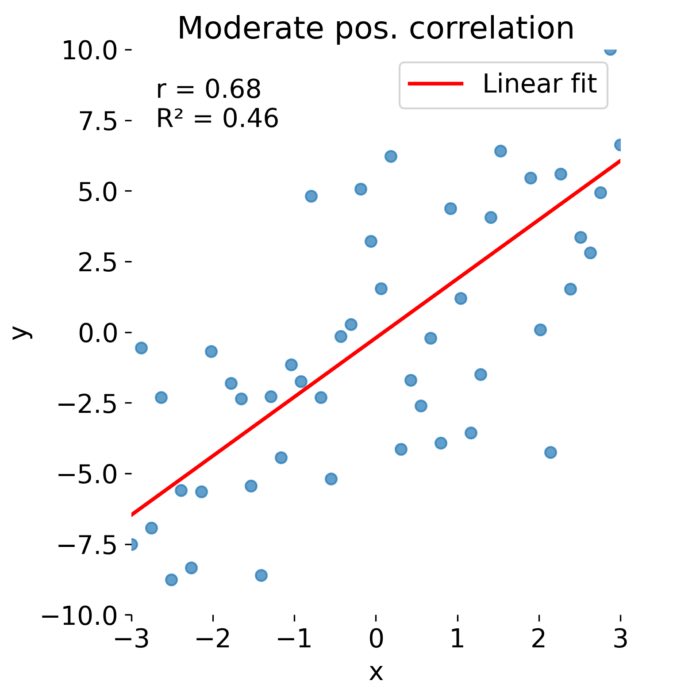
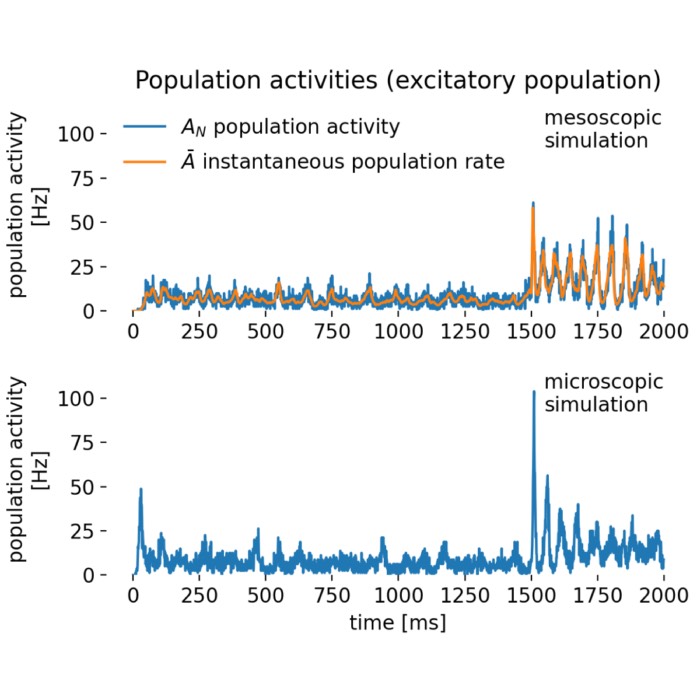
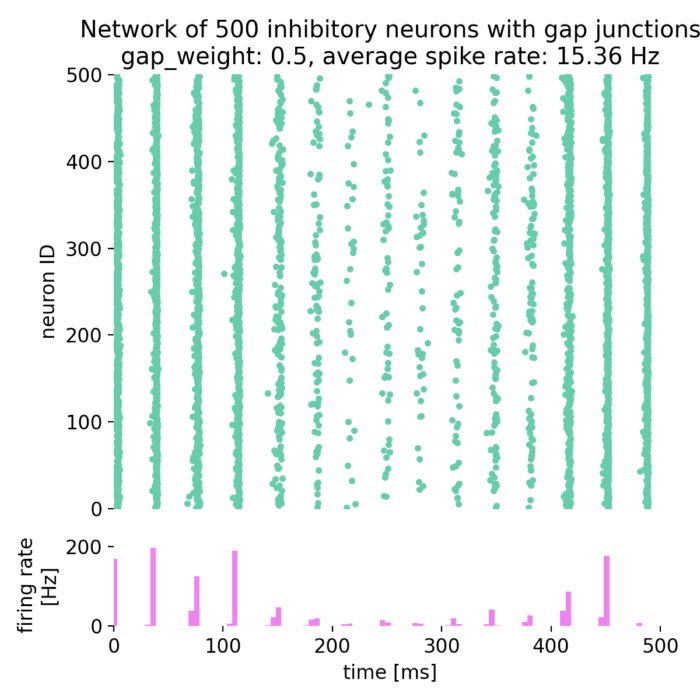
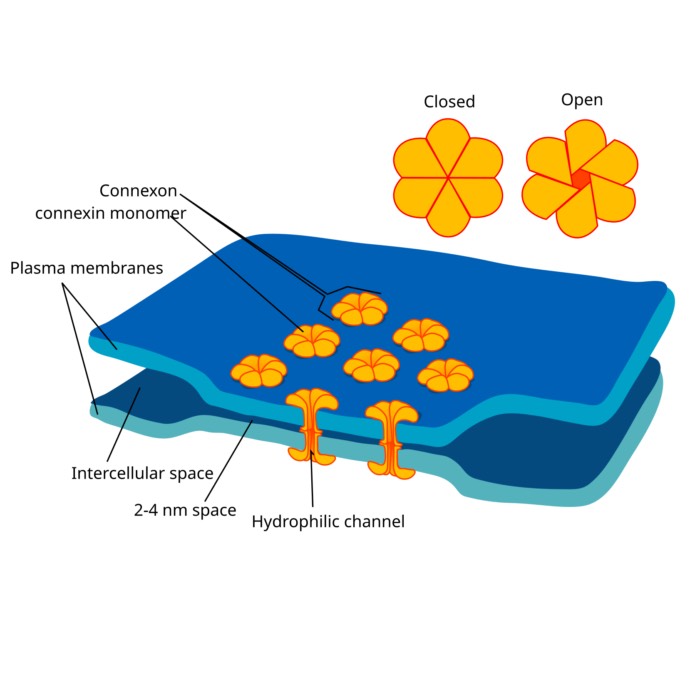
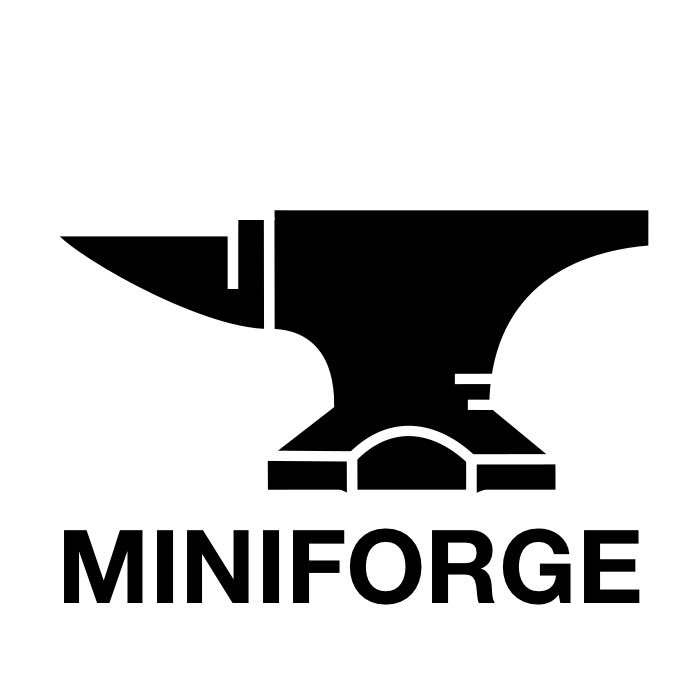
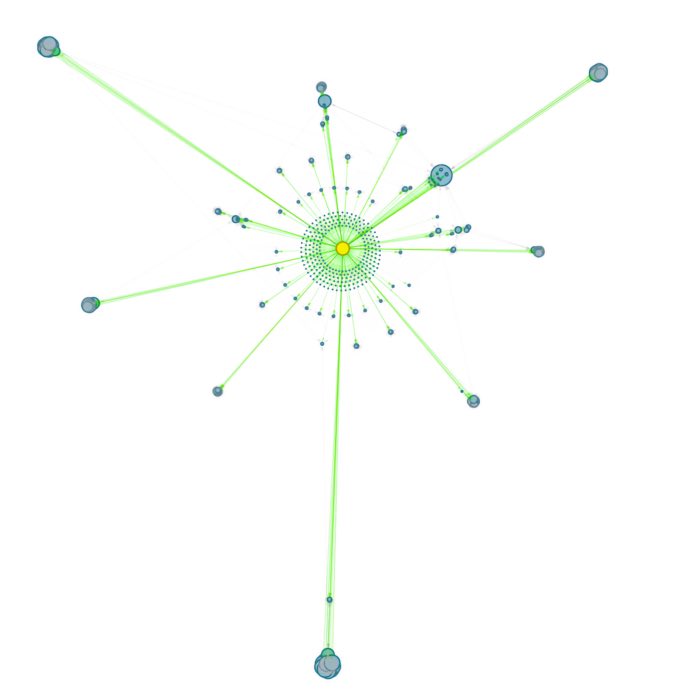
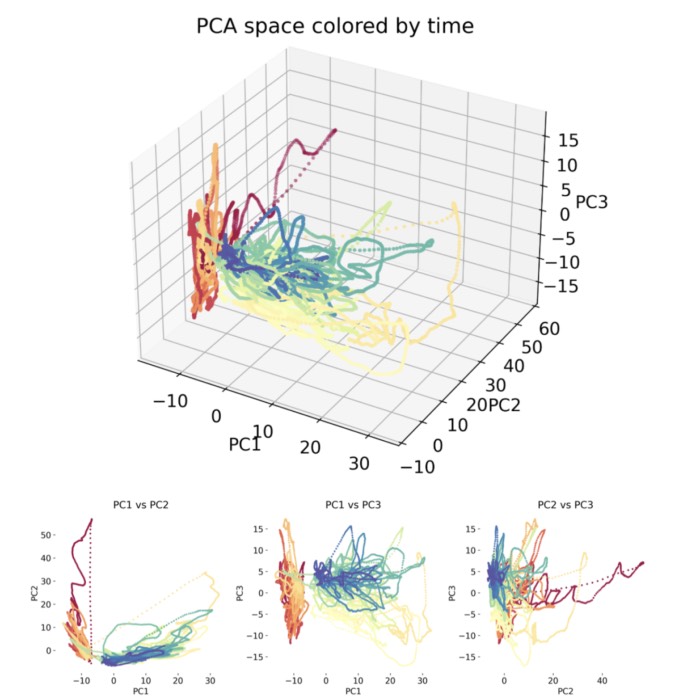
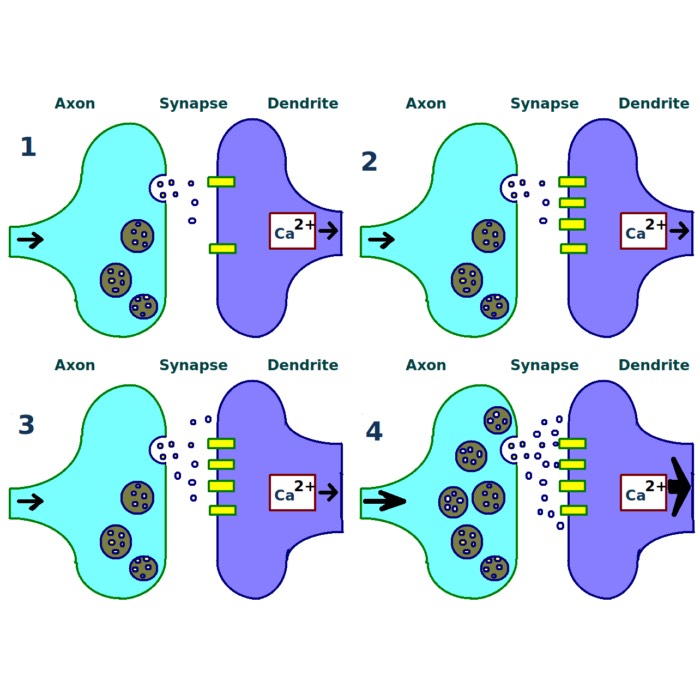
comments